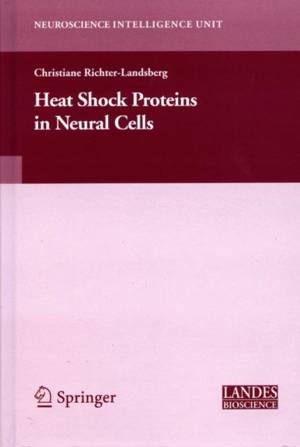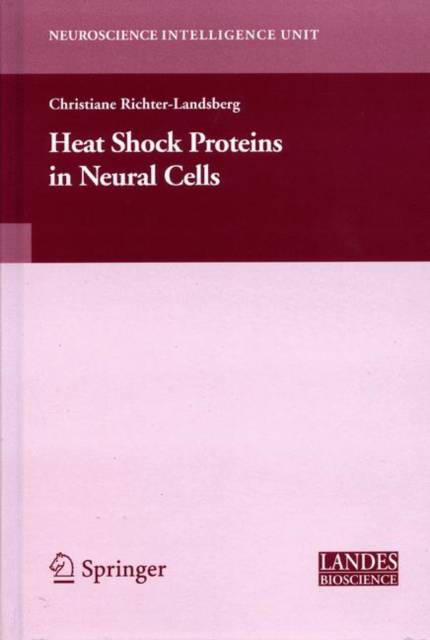
- Afhalen na 1 uur in een winkel met voorraad
- Gratis thuislevering in België vanaf € 30
- Ruim aanbod met 7 miljoen producten
- Afhalen na 1 uur in een winkel met voorraad
- Gratis thuislevering in België vanaf € 30
- Ruim aanbod met 7 miljoen producten
Zoeken
Heat Shock Proteins in Neural Cells
€ 209,95
+ 419 punten
Omschrijving
eat shock proteins (HSPs), also called stress proteins, are not only induced in response to elevated temperatures, but also as a result of various stress situations, including environmental strains, viral H infection, ischemia, anoxia and oxidative stress. These stress situations trigger cellular defence mechanisms that act as an emergency system capable of combatting the toxic consequences due to the accumulation of misfolded proteins. Heat shock proteins are involved in many physiological processes, including development and differentiation, organisation of the cytoarchi tecture by binding to cytoskeletal elements and regulation of the balance between cell death and survival. Many heat shock proteins work as molecular chaperones. In this role, they contribute to in vivo protein folding and prevent nonproductive interactions with other proteins and cellular c- ponents. In recent years it has been found that the chaperone system and the proteolytic machinery work closely together, and that proteasomal - hibition causes the upregulation of stress proteins. Impairment of the proteasomal machinery and chaperone functions lead to protein damage, which contributes to neurodegenerative disorders and to the aging process.
Specificaties
Betrokkenen
- Uitgeverij:
Inhoud
- Aantal bladzijden:
- 115
- Taal:
- Engels
- Reeks:
Eigenschappen
- Productcode (EAN):
- 9780387399522
- Verschijningsdatum:
- 25/06/2008
- Uitvoering:
- Hardcover
- Formaat:
- Ongenaaid / garenloos gebonden
- Afmetingen:
- 236 mm x 155 mm
- Gewicht:
- 362 g

Alleen bij Standaard Boekhandel
+ 419 punten op je klantenkaart van Standaard Boekhandel
Beoordelingen
We publiceren alleen reviews die voldoen aan de voorwaarden voor reviews. Bekijk onze voorwaarden voor reviews.










